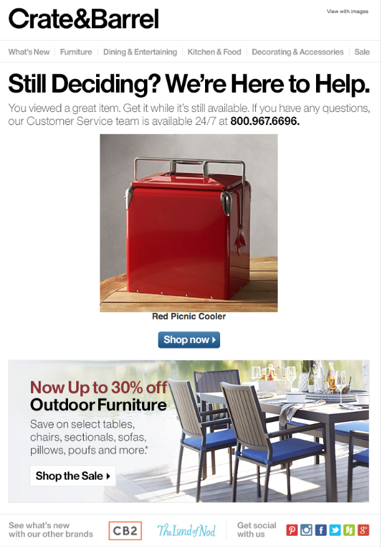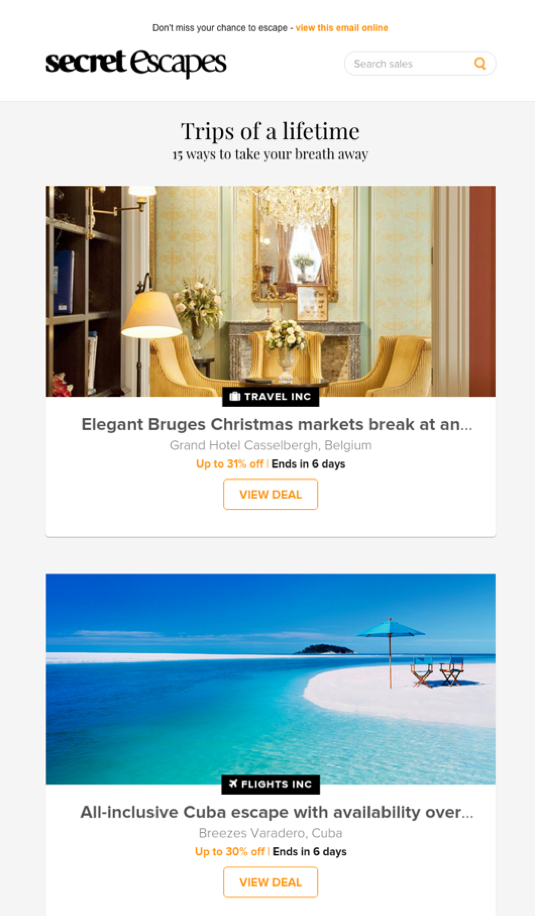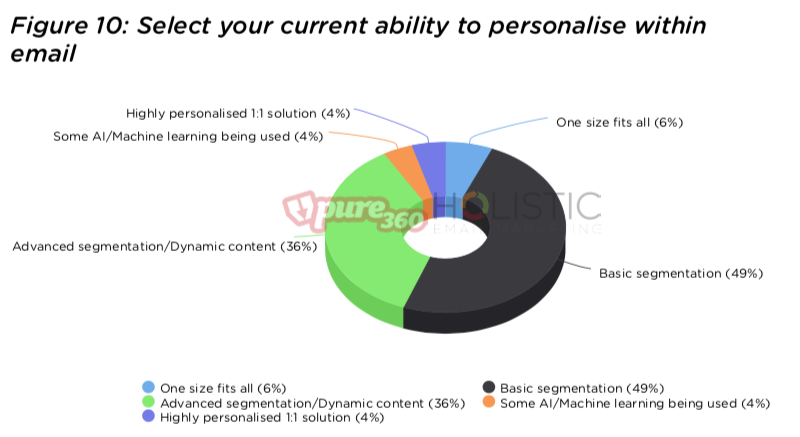Personalization: It’s Both an Art and a Science
As marketers, we focus almost exclusively on the science of personalization – gathering the data, setting up segments and triggers, figuring out the mechanics of automating emails, creating and testing the email content and coordinating with other channels to create an omni-channel approach.
We aren’t as well versed in the art of personalization—the ideas and practices that guide our hands as we set up our personalization plans.
Why not?
Mainly because it’s harder, especially now that many ESPs and growth marketing platforms make personalization as easy as “drag and drop.”
However, art and science work hand-in-hand to deliver the kinds of results that will lead you to your goal for your personalization efforts: “helpful marketing” that enhances your customer’s experience along the entire journey, using all the marketing channels available to you.
The Art of Personalization
“Personalization is a strategy, a marketing tool and an art. It brings focus to your message and delivers an experience that is customer-oriented and relevant.” ~ Christian Ricci, Chia Monkey
That’s right, think about it. The reason why you’re reading this article is that you want to enhance your customer’s experience. This is your objective. Personalization itself is mainly a collection of tactics. That’s the science aspect. The art comes in how you use those tactics. In other words, it’s the strategy guiding your use of those tactics.
We’ve seen what happens when you neglect the art of personalization and just focus on the science. You’ve probably heard the apocryphal story about a Minneapolis man who learned his teenage daughter was pregnant because Target sent her coupons for baby-related products, all based on her purchase history.
Target lived up to its name with this offer, and that’s where it went off the rails. Instead of mixing its relevant content with unrelated offers, it sent a highly targeted offer via direct mail.
Although some have cast doubt on the specific circumstances of this story, the science of Target’s deep-data personalization strategy is well known among data scientists. Target got the science right, but not the art—the battle plan that guides your use of those tactics in helping you achieve your goals. I’ll explain why in the next section.
In this discussion of personalization as both an art and a science, I talk about art first because the art guides the science. Figuring out tactics is easier, but neglecting strategy for tactics will lead to disaster.
Overt Versus Covert Personalization
Your strategy will help you decide whether to use more obvious personalization (overt) or less obvious (covert). This is how the art guides the science. You’ll probably end up using both within your entire digital program—each one will be appropriate at different times and in different channels. A true omni-channel marketing approach gives you that flexibility.
- Overt personalization shows the recipient clearly that the email is meant for her and her alone. It uses data such as name, location, behavior, purchases, recommendations and other sources and often will explicitly reference them somehow (i.e. “Recommended for you.”)
- Covert personalization is subtle. Use this approach when your customers might see an overt use of data as creepy, especially if you’re using third-party data that they might not expect you to have, such as their behavior on other brands’ websites. The beauty of this approach is that you can’t get it wrong.
You avoid the creepiness factor when your covert data makes your email look like serendipity. Your customer thinks, “Wow! This email totally gets me!” Not, “Ewww—how did they know that about me?”
Overt? Covert? Both?
When covert beats overt: In Target’s case, the company used overt tactics when covert personalization would have avoided disaster. Had Target mixed its pregnancy offers in with less personalized content, it would not have outed the teen’s condition. Serendipity is often more effective than in-your-face content.
When to use both: Browse-abandon emails can use either overt or covert personalization or both. Show the customer the item she browsed and link back to the product page. Or, turn the email into a newsletter and mix general content with browsed products.
The examples below show you what each tactic looks like in email.
Overt Personalization: Crate and Barrel

Crate & Barrel uses overt personalization with this cart abandonment email reminder.
Only the product image is personalized, but this email clearly intends to nudge the shopper to buy: the hero image shows the browsed product, and the “Shop Now” button links back to its sales page on the website.
The service focus (“We’re here to help” overshadows “Shop Now”) makes this email feel more like a helpful reminder than a sales push.
Covert Personalization: Secret Escapes

Secret Escapes keeps it subtle with this email newsletter.
This travel newsletter packages browsed offers in a newsletter format without obvious reminders that they had been previously browsed. The CTA (“View Deal”) invites curiosity rather than asking for a higher commitment, such as “Book Now.”
Personalization Clearly Improves Email Performance…
“Personalization has already been proven to have real impact on a company’s bottom line. Research shows that it can reduce acquisition costs by as much as 50 percent, lift revenues up to 15 percent, and increase the efficiency of marketing spend by as much as 30 percent.” ~ “7 Growth Marketing Predictions for 2018,” Iterable’s Growth Marketing Blog
Iterable predicts that marketers who rely on “one size fits all” marketing will get left behind by those who adopt hyper-personalized messaging, such as Spotify’s year-end playlist wrap-ups.

Spotify takes personalization to the next level with their year-end playlists.
…But Marketers Vary in Their Abilities to Personalize
My company’s latest study, “Email Marketing Personalisation,” asked 203 marketers to rate their personalization efforts. Here are two findings:

Source: Holistic Email Marketing
- Almost everyone personalizes something: Almost half of marketers use basic segmentation, while the next-largest group of marketers uses advanced forms.
- Metrics matter: All marketers who measured personalization using results-oriented metrics, such as customer lifetime value along with campaign metrics like clicks and conversions saw a lift, while 89% of those who used only campaign metrics saw a lift.
Bringing Art and Science Together for Personalization
Follow this order when creating a personalization plan:
- Determine the objective. Which business challenge must you resolve through personalization? Potentially it is, “enhance the customer experience by providing more relevant email communications.”
- Develop the strategy. Introduce personalization by deciding which personalized communications will achieve your objective.
- Choose the tactics that carry out your strategy. As I noted before, you must always lead with strategy, which will support your objective.
Wrapping Up: Remember That Personalization Is an Omni-Channel Customer Tactic
Keep this in mind: It is not a campaign tactic or even a channel-specific tactic. It’s a customer tactic. As such, you must implement and measure it through the customer journey and lifecycle.
This means focusing on the complete customer journey across all of your marketing channels, not just on one channel. Although I am discussing personalization in email in this post, your best results come when you coordinate and personalize across all channels.
Interested in finding out more? Check out how the awesome team at Holistic Email Marketing can help take your email programme to the next level.
Originally posted on Iterable
